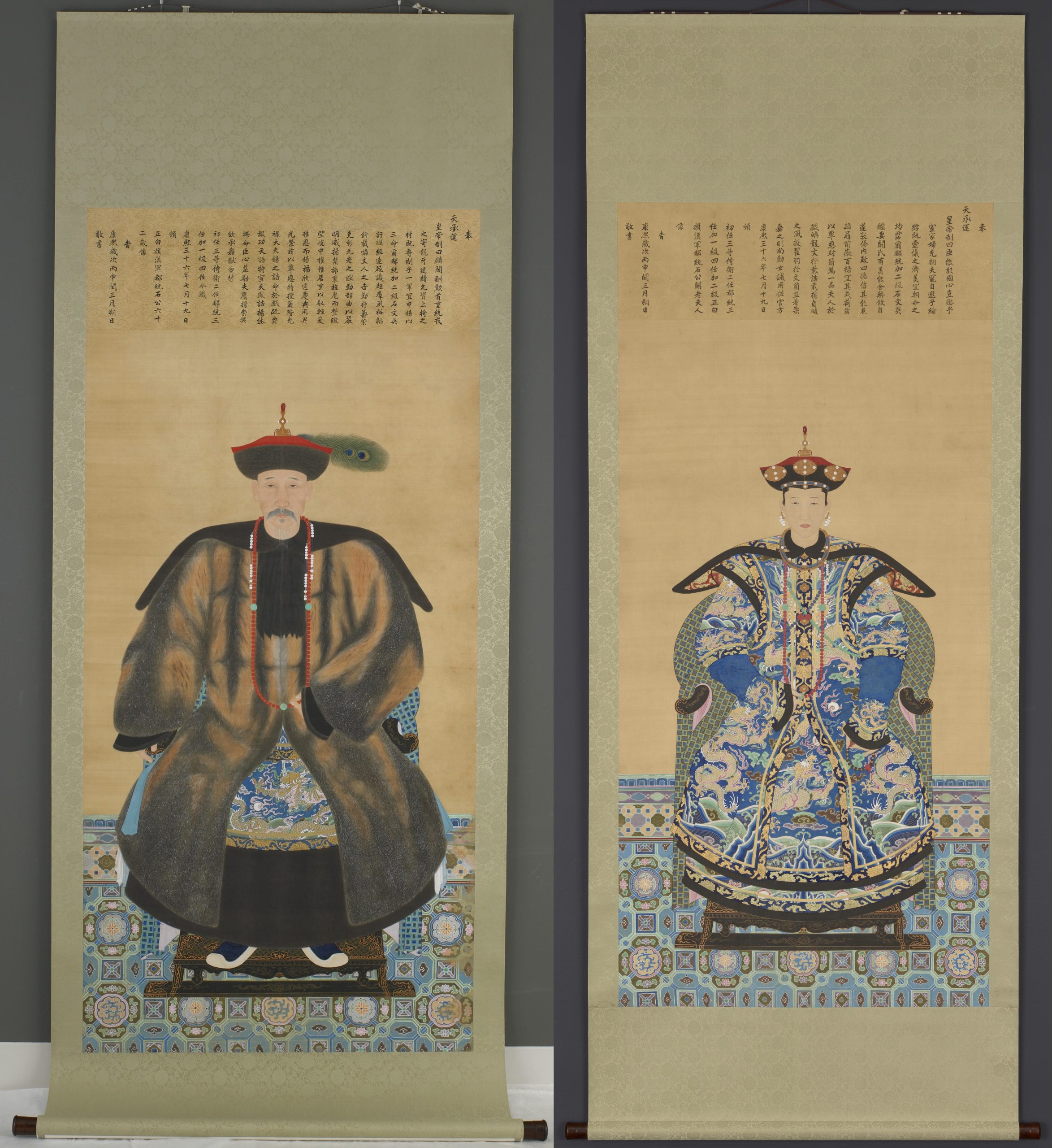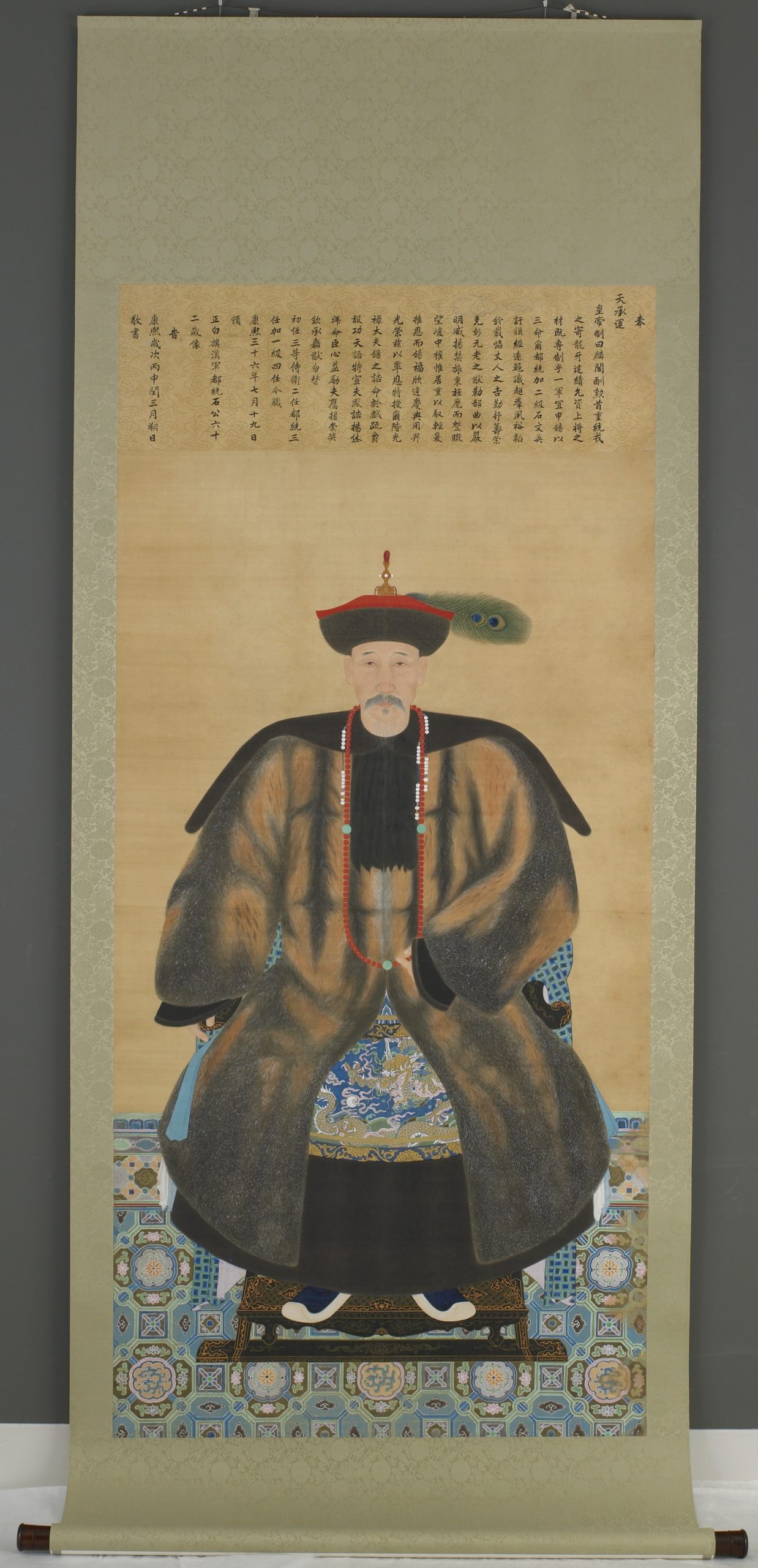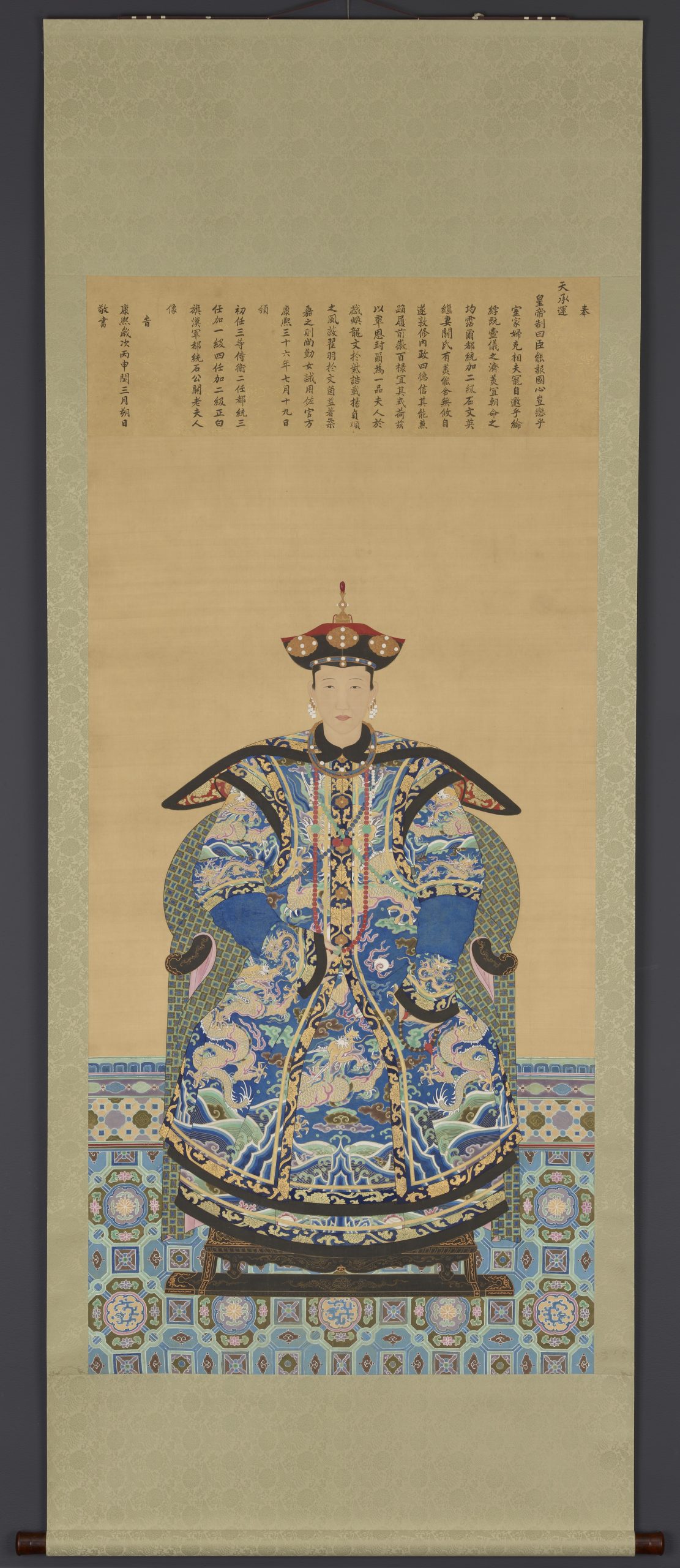This pair of paintings are ancestorsomeone from whom you are descended. In Western thought, it is usually more distant than a grandparent; however, in Chinese culture, deceased parents and grandparents are considered ancestors. portraits, which are formal, forward-facing portraits of deceased ancestors used for family worship. The paintings depict Shi Wenying(shir wen-ying), a lieutenant-general appointed by the Kangxi Emperor (reigned 1661–1722), and his wife Lady Guan(gwahn). They each sit in a round-backed chair in a frontal and symmetricala mirror image in which objects on one side of an imaginary line are exactly like objects on the other side. pose. Matching chairs and carpets visually connect the portraits. The settings are otherwise blank, drawing our attention to the sitters. Lady Guan wears full court dress (see F2015.7) as we can tell from the highly decorated hat, robes, and set of court jewelry. She wears three earrings in each earlobe, indicating she was a Manchu(man-choo) ethnic group that lived for centuries in the northeast of modern-day China. In the seventeenth century CE, Manchu people conquered China and ruled there for more than 250 years. woman (Chinese women generally wore a single pair of earrings). She also holds Buddhist prayer beads in her left hand. General Shi wears a thick fur coat and a very noticeable “two-eyed” peacock feather in his hat. The number of eyes indicates status. They are imperialrelating to an empire, an emperor, or the home of royals. rewards that reveal Shi’s high rank. Both paintings have inscriptions that record honors the couple received from the court.
An ancestorsomeone from whom you are descended. In Western thought, it is usually more distant than a grandparent; however, in Chinese culture, deceased parents and grandparents are considered ancestors. portraitan image of a person, usually focused on their face and shoulders. is traditionally in the hanging scroll format and depicts a full body image. Obviously, it would require an accurate record of the face but almost equally important is a detailed depiction of the clothing. This signifies the person’s social standing and brings glory to the family. Lady Guan’s face is, however, more masklike compared to her husband’s. This corresponds to a practice of secluding women from unrelated men, including professional artists. The painter had to rely on her relatives’ descriptions of her facial features, hoping to achieve some personal likeness, such as the sharp chin and narrow eyes of Lady Guan(gwahn). While a sense of realism is crucial when depicting the face, artists avoid making the setting look realistic because the ancestor is not supposed to be present in the physical world. For example, the carpets in these two artworks were painted parallel to the picture plane, much like a panel of wallpaper.
Ancestorsomeone from whom you are descended. In Western thought, it is usually more distant than a grandparent; however, in Chinese culture, deceased parents and grandparents are considered ancestors. portraits are typically commissioned by the family members of the deceased ancestors. They are often made as pairs of scrolls with a husband and wife portrayed individually. They are displayed (usually hung above altars) during domestic rituala set pattern of behavior for a religious or other kind of ceremony. ceremonies, especially those during the Chinese Lunar New Yeara festival celebrated in China and other Asian countries that begins with the first new moon of a lunar calendar.. Some families also hang ancestor portraits on occasions when they want to report good news, such as introducing a new bride to deceased parents.
- Look carefully at these two portraits. Make lists of things that are similar and different about them. What do these differences suggest about the roles of men and women at the Qing dynastythe last imperial dynasty of China, 1644–1911. court?
- Imagine you could have a conversation with the man or the woman depicted in these portraits. What questions would you ask to learn more about their lives?
- Research formal court clothing of the Qing(ching) dynastya series of rulers from a single family.. Then, make notes about the colors, patterns, and symbolsshapes or designs that are recognizable and have a meaning associated with them that can be found on the garments shown in these paintings. Explain your findings to a classmate.
- Ancestorsomeone from whom you are descended. In Western thought, it is usually more distant than a grandparent; however, in Chinese culture, deceased parents and grandparents are considered ancestors. portraits still play a role in Chinese culture today. Do your own research online or by speaking with people you know and find an image of a contemporary ancestor portraitan image of a person, usually focused on their face and shoulders. displayed in a home. Describe the significance of this portrait for its owners.










